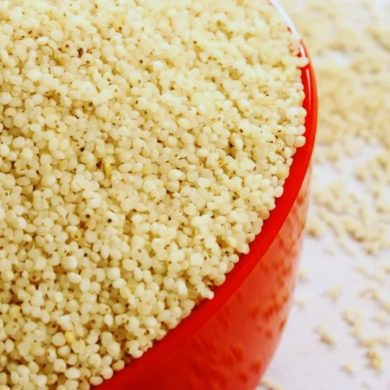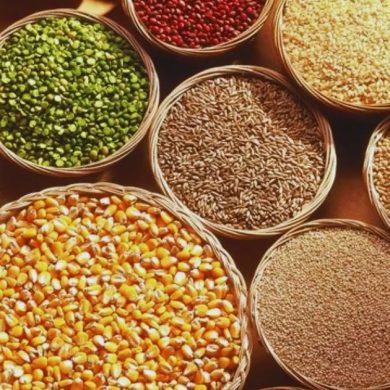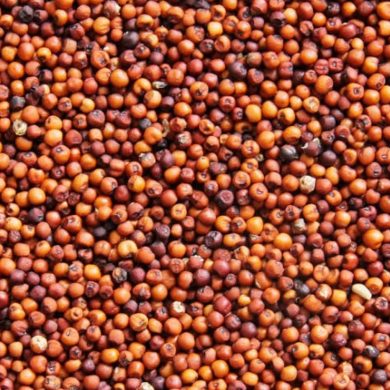No products in the cart.
Return To ShopThe Wonder Food for Lactating Women
Following childbirth, it is very important to pay close attention to your diet, just as it was during your pregnancy. Staples from every food category should be a part of your diet in order to promote healing, boost your milk production, and quicken the body’s recovery process because protein aids in the rebuilding and mending of muscles and tissues, while carbohydrates provide you with the much-needed energy. Ragi is a high-fiber grain that has much more nutritional qualities than other cereal and grains like rice, wheat, or barley and it is a source of vital essential amino acids, including methionine, threonine, and tryptophan, which support a mother’s health.
Benefits of Ragi for Lactating Women
Ragi has a good nutritional profile that includes all the important macronutrients (carbs, fiber, fats, and proteins) as well as significant amounts of important micronutrients (vitamins and minerals). Its low salt and cholesterol content helps to protect the heart, and Ragi also has significant amounts of vitamins C and E, which support healthy immune systems. Ragi is packed with B complex vitamins as well as minerals like calcium, magnesium, iron, and phosphorus, all of which can be highly beneficial for lactating women.
Enhances Milk Production
Ragi raises hemoglobin levels in women, which in turn enhances the amount of breast milk, which is also known as elevated lactation. Incorporating ragi into a nursing woman’s daily diet is crucial as it enhances the essential amino acids, calcium, and iron in the breast milk and that is good for the infant.
High Protein Content
The main protein source in ragi is Eleusinian, and this protein is regarded as a good protein for lactating women because it aids in the prevention of malnutrition. Five percent of the total protein in ragi is made up of Methionine, and that is why most nutritionists rank it as one of the best millet grains. Ragi’s small size prevents it from being polished like other grains, allowing us to enjoy it in its most natural state.
Helps with Natural Weight Loss
The high fiber content of ragi helps to keep your stomach full and prevents you from giving in to uncontrollable cravings and weight loss is aided by this. It converts blood sugar into insulin and lowers blood sugar levels in the body as a result of that process. Tryptophan is a kind of amino acid found in ragi that aids in weight loss, and Tryptophan suppresses your appetite, making you feel less hungry throughout the day.
Provides Vital Amino Acids
It contains specific essential amino acids that facilitate the healthy development of body cells and mend damaged muscular tissues. It helps women get back their strength while nursing every day.

Provides a Diet Free of Gluten
Many lactating women are intolerant to the gluten found in grains like wheat, which are frequently used as ingredients in most cuisines. Ragi is naturally gluten-free and is frequently suggested for a lactating woman’s diet since it can be used to make chapatis, dosas, and desserts. Eating ragi at night is generally not recommended, especially for people who have digestive issues, so you need to be careful of that.
High Calcium
As a great natural calcium source, ragi helps provide adequate calcium to lactating women which helps them regain their ideal bone density. While younger mothers can eat ragi on a regular basis, older individuals should limit their intake to prevent renal and gastrointestinal problems.
Prevents Anemia
A large number of lactating women suffer from anemia, which causes extreme weariness and produces less breast milk but Ragi is an iron-rich food that is beneficial for those with low blood hemoglobin levels.
Enhances Nervous System Functions
By preserving positive emotions and encouraging restful sleep, ragi aids in the treatment of anxiety and insomnia by balancing the levels of the neurotransmitter serotonin and this process helps lactating mothers produce more milk. Ragi contains high quantities of the amino acid tryptophan, and eating it each day helps to improve nerve impulse transmission, activate memory centers in the brain, and calm the mind, and all of these are helpful for new mothers.








8 comments
Adrienne3782
Very good https://is.gd/N1ikS2
adminAuthor
All the millets have low GI, all the millets are good for weight loss. Millets keeps you full for longer time, has lots of fiber and complex carbs which takes tie to digest and releases sugar into your blood slowly. Ragi is good for lactating women.
Hazel781
Good https://is.gd/N1ikS2
adminAuthor
All the millets have low GI, all the millets are good for weight loss. Millets keeps you full for longer time, has lots of fiber and complex carbs which takes tie to digest and releases sugar into your blood slowly. Ragi is good for lactating women.
James672
Good https://is.gd/N1ikS2
adminAuthor
Ragi, Foxtail, Little millets
Joanna4139
Awesome https://is.gd/N1ikS2
adminAuthor
Ragi